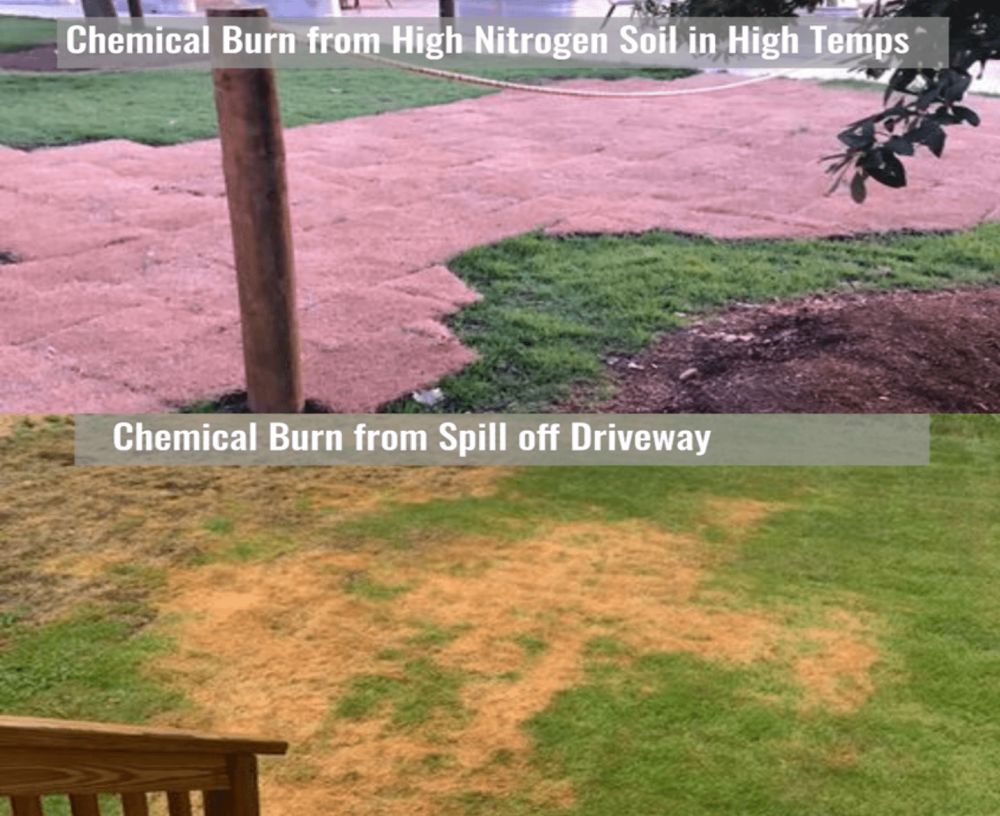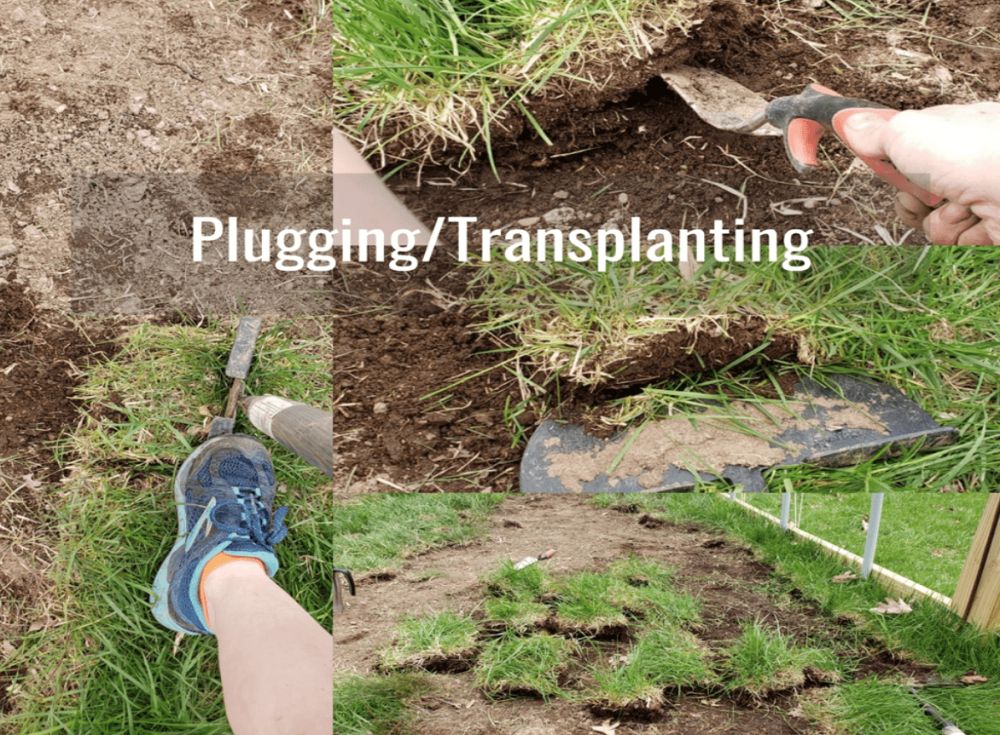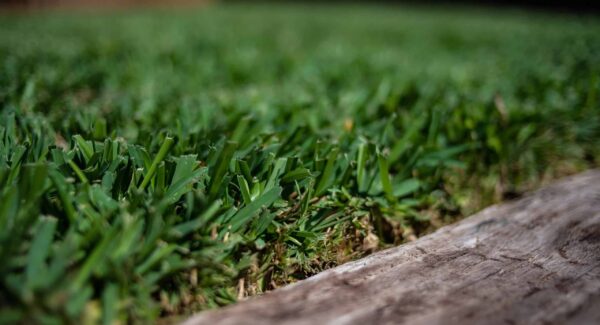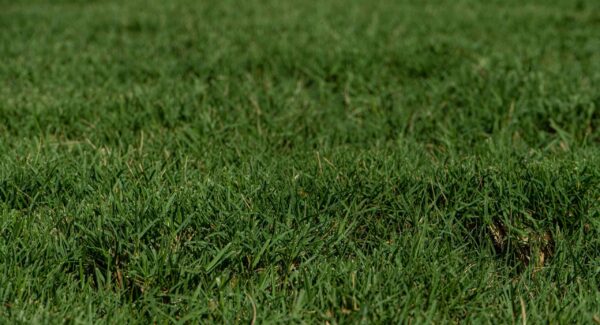Yellow Grass: Chemical Burn

As discussed on our Grass Care page, your soil blend should be loam topsoil and should never contain high nitrogen levels or more than 50% compost. We often fertilize our fields using commercial-grade, fast-release nitrogen at high rates. Depending on your soil’s health, subsequent weather, the grass cultivar planted, etc., your new lawn will not need to be fertilized until the next recommended fertilization date. Using a high nitrogen fertilizer, pure compost, or Dillo Dirt, can burn your new grass.
Do not apply fertilizer until your grass has rooted, and always follow the manufacturer’s instructions. Make sure to pay special attention to the labeled warnings, such as the ideal temperatures to apply the product. Please review our fertilizing article for more info & tips on lawn fertilizing.
If the incorrect soil was used prior to sod installation, or a chemical application has burnt your sod, sometimes increasing your irrigation can help flush the chemicals past the root zone and help the grass recover. Do not apply any other chemicals until your lawn has made a full recovery. Also, limit traffic in the damaged areas of your yard.
Keep in mind that blades that are entirely brown and crunchy are likely dead. These blades will have to be circulated out through mowing & natural decomp over time.
If the damaged area is large or more severe, you can take plugs from healthy areas of your lawn and transplant them into the damaged areas. First, you will need to remove the dead grass and cultivate the soil in the area(s) you will be sprigging. You can dig up plugs/sprigs using a landscape edger, as illustrated in the picture below. Make sure to dig up an inch or two of the soil with the grass to ensure you get decent roots & rhizomes.

Common Causes:
- High Nitrogen Soil
- Chemically Treated Soil
- Chemical Applications (especially on newly installed sod)
- Chemical Runoff
- Improper Water to Chemical Ratio
Resolution:
- Increase Irrigation to Dilute Chemicals
- Time
- Replace Sod
- Transplant Plugs from Heathy Areas





